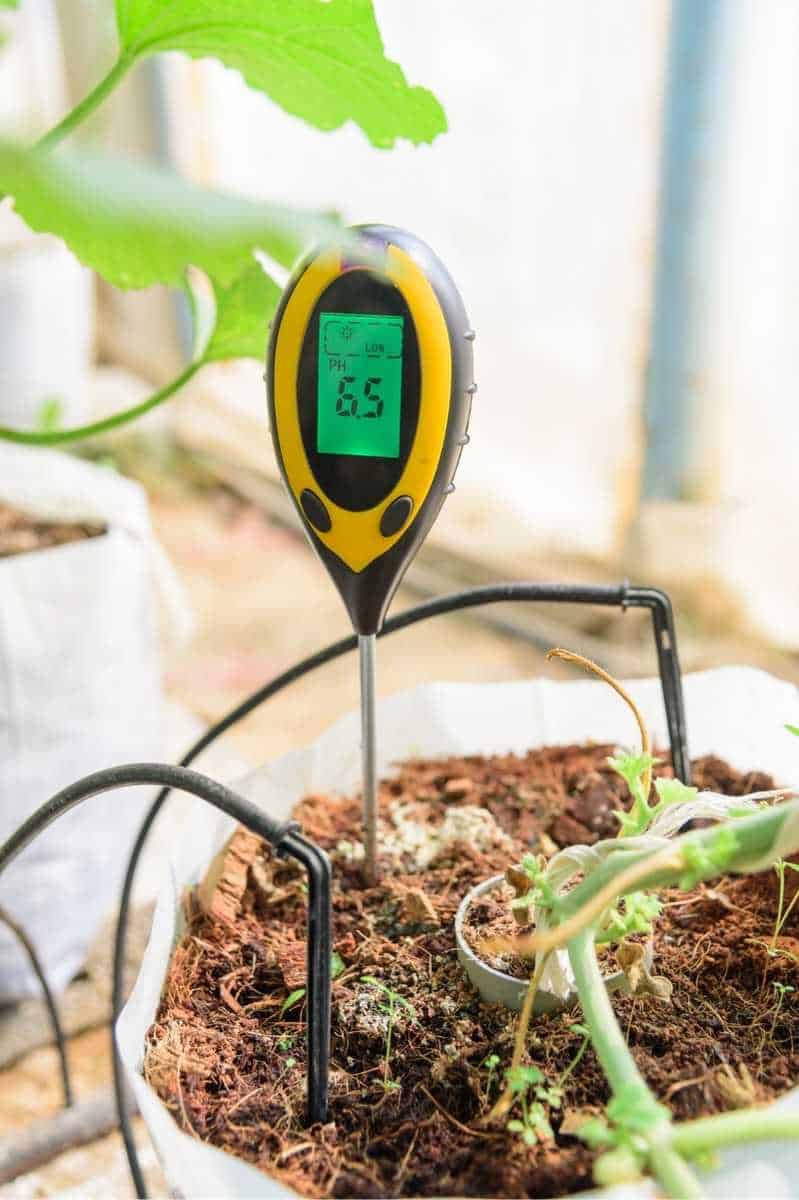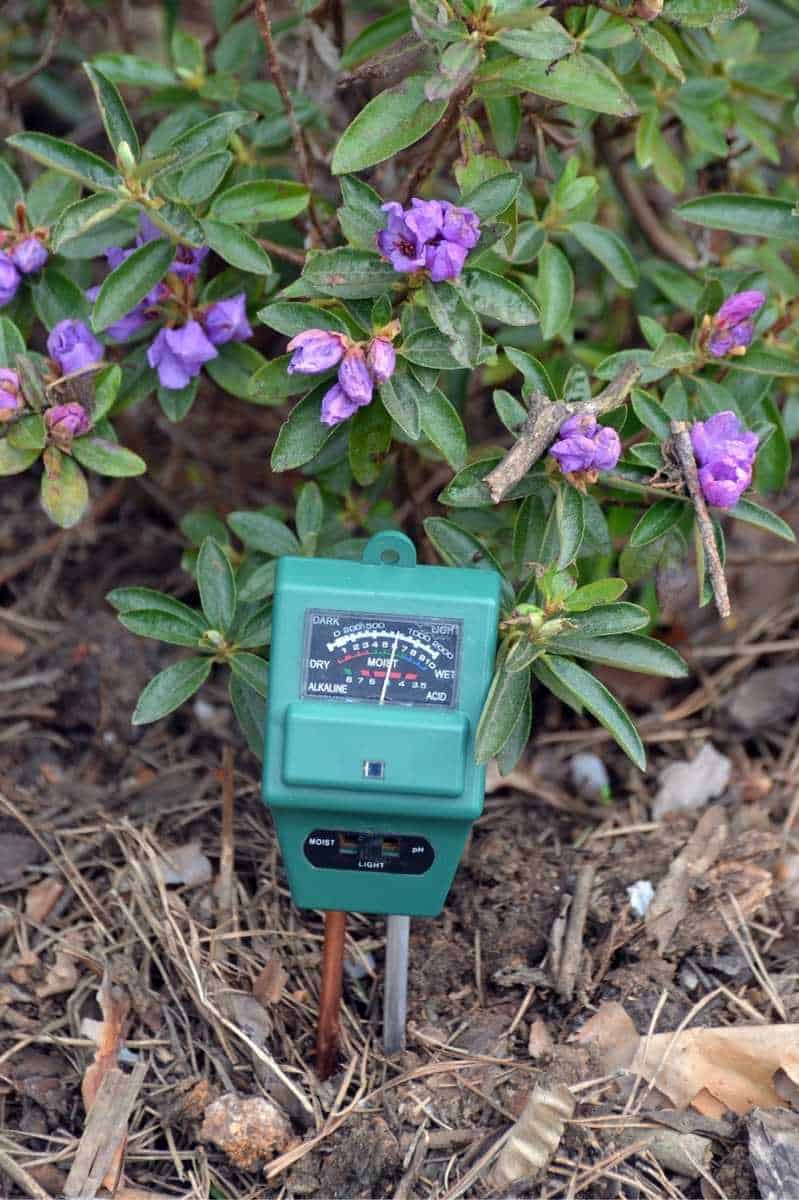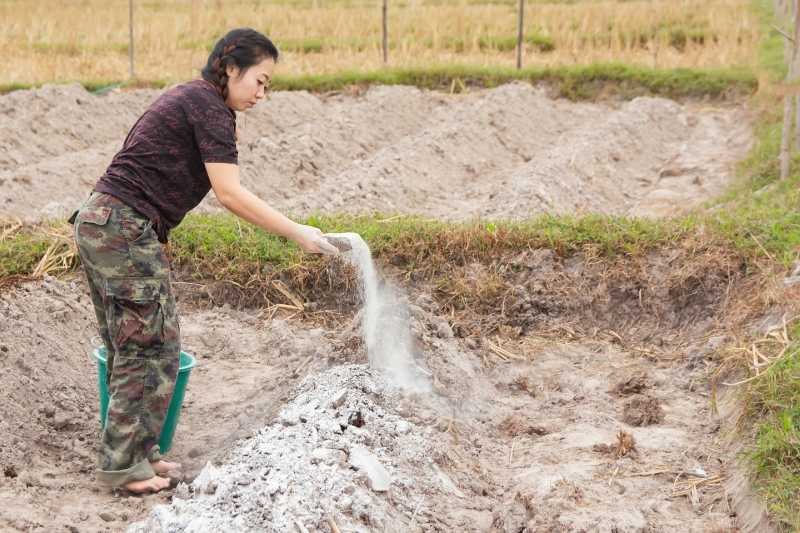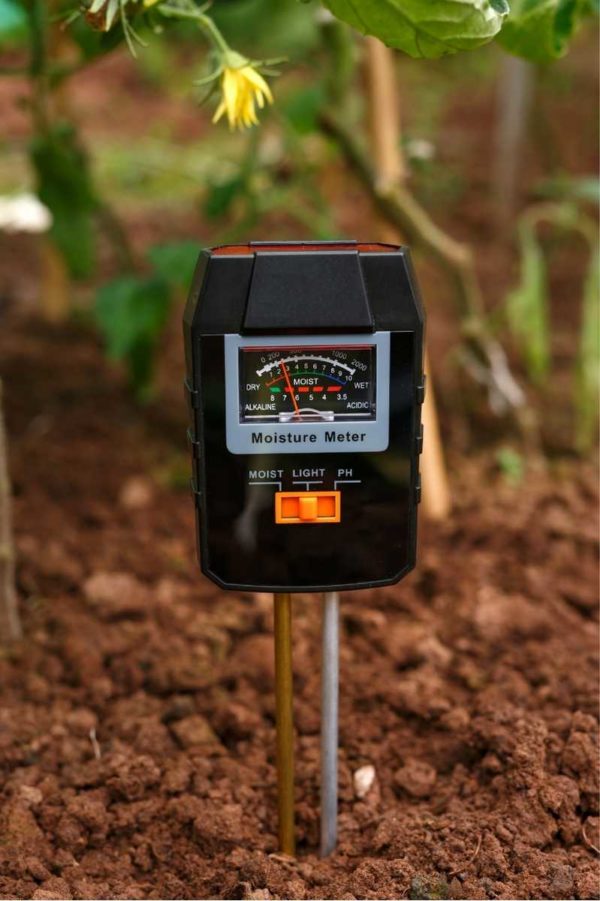The single most important data point you can have in your garden is your soil’s pH level. I’ve heard pH referred to as the latch on your garden gate—without good pH levels, you might as well not even step foot inside your garden.
pH levels are important because they determine how a plant uptakes nutrients. Without a good pH level, it doesn’t matter how much nitrogen you add to your soil—your plants can’t use it. Let’s get you your best garden ever by getting your pH right!

Table of Contents
What is soil pH and why is it important?
Your soil’s pH level is a measure of the acidity or alkalinity of your soil. The pH can range from 0 (very acidic soil) to 14 (very alkaline soil)—although typically, soils fall between 5 and 9. A pH of 7 is considered neutral. Most fruits and vegetables prefer slightly acidic soil.
We consider your soil’s pH level to be the most important element of soil health. The soil pH can affect your garden’s yields, the plants’ susceptibility to insects and diseases, and nutrient availability of your soil.
While some plants like varying levels of soil acidity (blueberries like it more acidic, and asparagus likes it more alkaline), if you can get your soil’s pH level to around 6.5, your garden plants will generally be very happy.
What affects soil pH?
The pH of your soil is affected by many different factors—your soil type, the natural sedimentary deposits in your area, the soil amendments you add, and even the kind of rain that falls in your area!

How can I test the pH of my soil at home?
While soil test kits are pretty inaccurate on their nitrogen, phosphorus, and potassium results, they can pretty accurately give you an estimate of the pH level of your soil. You won’t get exact numbers, but a good-quality home pH meter (we like this one) or test strips can allow you to get a ballpark number regularly without having to send soil samples out for testing every time.
When’s the best time to test your soil?
We recommend using a home pH meter or test to check your soil pH every time you plant a new crop.
We do recommend you get a lab soil sample pH test at least every 2-3 years or when you are starting a new bed or are having issues with yield or plant health in a particular area. The lab test can give you precise results and specific advice based on your pH levels.
Growfully Protip
Make sure your soil is damp before testing with a pH soil meter. They don’t give good results in dry soils.
What is the best soil pH tester?
Honestly, most of the pH soil meters out there work about the same. This test probe is our go-to soil pH meter because it’s easy to read, but most of them are built similarly and will do the trick. Soil pH test strips also do the trick!
Are home soil test kits accurate?
In general, home soil test kits aren’t very accurate when it comes to nutrient levels, but they are relatively accurate for getting a range for your pH levels.
Can I use a water pH tester in soil?
Some folks do use liquid pH testers with soil by making a slurry—combining soil with water. If your liquid pH tester or test strips comes with instructions on how to make the correct slurry for soil samples, by all means, go for it!

Can I test the pH without a tester or test kit?
While you can’t get an exact number, there is a fun home science experiment you can do to tell if your soil leans more acidic or alkaline using two kitchen pantry staples—baking soda and vinegar.
- Grab one cup of soil. If your garden is separated into beds, it’s best to test each bed separately. If you are growing in a row garden, selecting samples from various points throughout the garden and combining them together will do the trick.
- Divide the soil evenly into two non-reactive bowls—glass or plastic is best.
- Add 1/2 cup of distilled water to each bowl. Stir well to make a muddy slurry.
- In the first bowl, add 1/2 cup of vinegar. Observe the mixture and see if the mixture shows fizzing or bubbling. If it does, then your soil has an alkaline pH—higher than 7.0. Just like your science fair volcano experiment in school, this happens because there is a chemical reaction when the vinegar (an acid) comes into contact with basic soil. The more bubbling and fizzing, the more alkaline your soil. Soil that is best for most plants is slightly acidic, so any reaction when adding vinegar means you should probably have your soil tested professionally, and then adjust your pH based on recommendations.
- If the first test doesn’t produce a chemical reaction, proceed with the second bowl to test acidity. In the second bowl, add 1/2 cup of baking soda. Again, observe the mixture for visible fizzing or bubbling. If it does, then your soil has an acidic pH—lower than 7.0. A small amount of bubbling and fizzing means your soil is slightly acidic, which is perfect for growing most plants.
- If you don’t see a chemical reaction in either bowl, your soil is right around neutral pH.
Another fun way to estimate your soil pH level—red cabbage! Yup. Cut up 4-5 leaves of red cabbage and place them in a pot filled with 2 cups of distilled water. Bring a boil and simmer for 10 minutes. Remove from heat and let it steep for 30 minutes. Then remove the cabbage and reserve the liquid.
Add about two teaspoons of soil to a jar and cover with two inches of cabbage water. Stir or shake and wait about 30 minutes.
- If the water turns reddish/pink, your soil is acidic.
- If the water is blue or purple (similar to the original cabbage-water color), your soil is neutral.
- If your soil is teal, green, or yellow-green, your soil is alkaline.

How do you adjust pH in soil?
Alright, so now you know your soil’s pH, and unless you naturally have the perfect soil for growing most crops (right around 6.5 pH), then you need to do some adjusting. Let’s get to it!
To raise pH (make soil more alkaline or “sweeten”):
The majority of people who need to make pH adjustments need to make their soil more alkaline—AKA “sweetening” the soil. The way to do this is by adding lime. Lime comes in a bunch of different forms, and here are our favorites:
- Garden lime (typically Calcium Carbonate) is the standard addition to the soil to sweeten it. It is natural limestone that is ground up into a fine powder.
- Dolomite lime (Calcium Magnesium Carbonate) is finely ground natural limestone that also includes magnesium—an important micronutrient in the garden.
- Crab meal is a medium-rate nitrogen amendment that also contains 25% lime. If your soil needs more nitrogen as well as some alkalinity, it might be the soil amendment for you. We don’t recommend using this soil supplement where you are growing nitrogen-fixing plants such as peas, beans, and legumes.
- Dry wood ash (yes, the stuff from your fireplace or wood stove) is a rapid-release potassium amendment for soil that also provides lime.

To lower pH (make soil more acidic):
Most people just want to acidify their soil when growing acid-loving plants (like blueberries), but some of us are cursed with naturally alkaline soil. Here in Southern Indiana, our garden is directly over a large limestone deposit—which means our untreated soil can hit upwards of 8-8.5 on the pH scale!
Unfortunately, it is impossible to permanently correct naturally alkaline soil. The corrections for alkaline soil typically last less than a growing season and need to be regularly reapplied. Here’s what we use:
- Sulfur. We add garden sulfur (typically sold as “Soil Acidifier”) to our garden each growing season. We also regularly use sulfur-based fertilizer blends (we love Holly-tone from Espoma) to our garden.
- Peat moss. Peat is one of the very best ways to add acid to your soil and improve soil condition. Unfortunately, peat moss is not a sustainable choice—the harvesting of it is causing serious damage to our already ailing planet. While coco coir is a wonderful sustainable alternative for improving soil condition, it does not lower pH in the same way peat does. We have almost entirely stopped using peat moss in our garden while we search for a company that harvests peat sustainably (if that’s even possible).
- Organic matter from evergreen trees. It’s a common garden myth that adding organic matter from evergreen trees to your garden (such as pine needles, pine shavings, cedarwood chips, etc.) will greatly acidify your soil in a hurry. Not true. The shift in pH is gradual and minimal, and most folks with good garden pH won’t notice a difference. But if you are struggling with alkaline soil, any little bit helps—so we’re constantly adding evergreen organic matter to our soil to nab every 0.1 level of pH we can get!
- Vinegar. If your soil is very alkaline and you are looking for a quick way to move your soil pH, diluted distilled vinegar is a good option. We use vinegar as a soil drench or foliar spray at a rate of 2 tablespoons per gallon of water in our garden. Be aware that the acidifying effects of vinegar do not last long, but it is good for when acid-loving plants need a quick boost of acid. We mostly use this in our berry patch with good results.
Growfully Protip
Since most soils are neutral or acidic, many soil amendments contain hidden ingredients to sweeten soils. Double-check your next bag of compost or fertilizer, and you might be surprised to find lime added. This isn’t a problem if you have neutral or acidic soil, but it can quickly undo all your hard work if you have alkaline soils!








Thanks so much for the tips on how to test the ph level of soil. This has been a real eye opener.
Thank you for explaining that the way to raise pH is by adding lime. My friend has been talking about how she thinks there’s a problem with her soil’s pH levels. I’m not sure if she needs to raise the pH or lower it, but I think knowing what to do in either case will be a huge help to improving her garden.